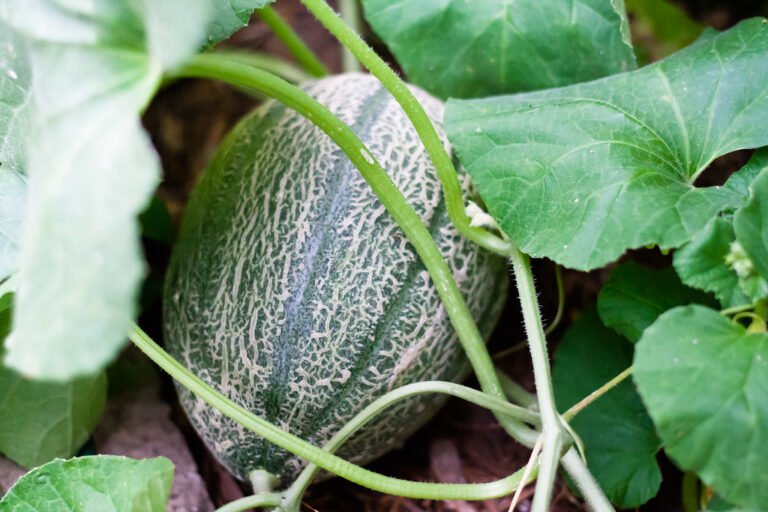Identifying, Treating, and Preventing Common Garden Pests and Diseases
Are pests and diseases wreaking havoc in your garden? Don't fret! This article has got you covered. Learn how to identify, treat, and prevent common garden pests and diseases with expert advice and practical tips. From pesky aphids and caterpillars to stubborn fungal diseases and root rot, we'll guide you through it all. Get ready to reclaim your garden and enjoy the fruits of your labor without any unwanted guests. Let's dive in and tackle those garden challenges head-on!
Aphids
To effectively deal with aphids in your garden, you need to be aware of their presence and take immediate action. Aphids are small, pear-shaped insects that can wreak havoc on your plants if left unchecked. However, there are natural predators and organic remedies that can help you control their population and protect your garden.
One effective method is to introduce natural predators such as ladybugs and lacewings into your garden. These insects feed on aphids and can help keep their numbers in check. Additionally, you can create a homemade organic spray by mixing water, dish soap, and a few drops of neem oil. This solution can be sprayed directly on the affected plants, suffocating the aphids and preventing them from spreading.
Regularly inspecting your plants for signs of aphids and promptly taking action is crucial in preventing infestations. By utilizing natural predators and organic remedies, you can effectively manage aphids and maintain a healthy garden.
Fungal Diseases
To effectively address fungal diseases in your garden, it is important to understand the potential risks and implement proactive measures for prevention and treatment. Preventing fungal diseases starts with maintaining good garden hygiene. Keep your plants well-spaced to improve air circulation and reduce humidity, as fungi thrive in moist environments. Avoid overhead watering and instead, water at the base of the plants to minimize fungal spread. Regularly remove any plant debris or fallen leaves, as they can harbor fungal spores. Additionally, treating powdery mildew, a common fungal disease, requires a combination of cultural and chemical methods. Prune infected plant parts and dispose of them properly. Apply a fungicide, following the instructions carefully, to control the spread of the disease. By following these prevention and treatment methods, you can effectively combat fungal diseases in your garden.
Caterpillars
To effectively address caterpillars in your garden, you need to identify and implement proactive measures for prevention and treatment. Caterpillar control is an essential part of organic pest management, as these voracious eaters can cause significant damage to your plants. Start by inspecting your plants regularly, looking for any signs of caterpillar presence, such as chewed leaves or droppings. If you spot caterpillars, you can manually remove them from the plants by handpicking or using a brush to gently flick them off. Another effective method is to encourage natural predators, such as birds or beneficial insects like ladybugs, to control the caterpillar population. You can also use organic insecticides made from natural ingredients like neem oil or Bt (Bacillus thuringiensis) to target caterpillars specifically. Remember to follow the instructions on the product label for safe and effective use. By implementing these proactive measures, you can effectively manage caterpillar infestations and protect your garden from their destructive behavior.
Root Rot
Prevent root rot in your garden by ensuring proper drainage and avoiding overwatering. Root rot is a common problem that affects many plants and can lead to wilting, yellowing leaves, and even death. To prevent root rot, make sure your plants are in well-draining soil and that water doesn't pool around the roots. Avoid overwatering by allowing the top inch of soil to dry out before watering again. If your plants show signs of root rot, there are effective treatments available. One option is to remove the affected plant from the soil, trim away any damaged roots, and replant it in fresh soil. Another treatment is to use a fungicide specifically designed to combat root rot. Remember, prevention is the best approach, so take the necessary steps to protect your plants from this damaging disease.
Beetles
If you are experiencing root rot in your garden, it's important to also be aware of the potential damage caused by beetles. These tiny creatures may seem harmless, but they can wreak havoc on your plants if left unchecked. To effectively control beetles in your garden, there are a few methods you can try. One option is to use insecticides specifically designed to target beetles. Another approach is to handpick the beetles off your plants and dispose of them. Additionally, you can attract natural predators of beetles, such as birds and beneficial insects, to your garden. When it comes to types of beetles commonly found in gardens, there are a few notorious ones to watch out for. Japanese beetles are known for their voracious appetite and can quickly defoliate plants. Colorado potato beetles are another common pest that feeds on potato plants and other crops. By implementing these beetle control methods and staying vigilant, you can protect your garden from these destructive pests.
Powdery Mildew
Now let's address the issue of powdery mildew, a common garden disease that can spread quickly if not handled properly. Powdery mildew is a fungal infection that appears as a powdery white substance on the leaves, stems, and flowers of plants. To prevent powdery mildew, it is important to promote good air circulation by spacing plants appropriately and avoiding overcrowding. Additionally, watering plants at the base and avoiding overhead watering can help reduce the risk of infection. If powdery mildew does occur, it can be treated with organic fungicides or homemade remedies such as a mixture of baking soda and water. Regularly monitoring plants for signs of powdery mildew and taking immediate action can help prevent the spread of this disease and protect the health of your garden.
Slugs and Snails
To effectively manage slugs and snails in your garden, implement proactive measures to control their population. Preventing slug and snail infestations is crucial to maintaining a healthy garden. One organic method to control these pests is to create barriers around vulnerable plants. You can use materials like copper tape or crushed eggshells to deter them from reaching your precious plants. Additionally, you can introduce natural predators into your garden, such as frogs or birds, that feed on slugs and snails. Another effective method is to handpick them off your plants and dispose of them away from your garden. Regularly inspecting your garden and removing any hiding places like debris or moist areas will discourage their presence. By taking these proactive steps, you can control slugs and snails organically, ensuring a thriving garden.
Tomato Blight
One effective way to address tomato blight in your garden is by implementing proper sanitation practices. Tomato blight, caused by fungal pathogens, can quickly spread and devastate your tomato plants if not detected and treated early on. To prevent the onset of blight, start by selecting disease-resistant tomato varieties and providing adequate spacing between plants. Additionally, avoid overhead watering and instead opt for drip irrigation to keep the foliage dry. Regularly inspect your plants for any signs of blight, such as brown or black spots on the leaves, stems, or fruit. If you notice any symptoms, promptly remove and destroy the affected plant parts to prevent the spread of the disease. Applying a copper-based fungicide can also help to control the blight. By following these prevention methods and practicing early detection and treatment, you can effectively manage tomato blight in your garden.
Mites
To address mite infestations in your garden, it is important to be proactive in implementing preventative measures. Mites are tiny pests that can cause significant damage to your plants if left unchecked. One way to prevent mite infestations is by regularly inspecting your plants for any signs of mites, such as yellowing leaves or tiny webs. Additionally, practicing good garden hygiene by removing any dead or decaying plant matter can help deter mites from taking up residence in your garden. If you do notice mites on your plants, there are organic solutions you can use to treat them. For example, spraying a mixture of water and neem oil can help control mite populations without harming beneficial insects. Remember, early detection and intervention are key to preventing mite infestations and protecting your garden.
Leaf Miners
If you want to effectively address leaf miners in your garden, it is essential to understand their life cycle and habits. Leaf miners are small insects that lay their eggs on the surface of leaves. Once the eggs hatch, the larvae burrow into the leaf tissue and create winding tunnels as they feed. Controlling infestations of leaf miners can be challenging, but there are natural remedies you can use. One effective method is to remove and destroy infested leaves to prevent further spread. You can also introduce natural predators, such as parasitic wasps or ladybugs, to your garden to help control leaf miner populations. Additionally, using sticky traps or applying organic insecticides made from neem oil or pyrethrum can help deter these pests. By implementing these natural remedies, you can effectively manage leaf miner infestations and protect your garden.
Frequently Asked Questions
How Can I Attract Beneficial Insects to My Garden to Help Control Aphid Populations?
To attract beneficial insects like ladybugs and lacewings, plant flowers that attract pollinators such as marigolds and lavender. Companion planting with herbs like dill and fennel can also help control aphid populations in your garden.
What Are Some Natural Remedies for Treating Fungal Diseases in My Garden?
To treat fungal diseases in your garden, there are several natural remedies you can try. Effective homemade sprays, like a mixture of baking soda and water, can help control the spread of fungal infections.
How Can I Prevent Caterpillars From Damaging My Plants Without Using Harmful Pesticides?
To prevent caterpillar damage to your plants without using harmful pesticides, there are non-toxic methods you can try. These include handpicking caterpillars, using natural predators, and creating physical barriers like netting or row covers.
What Are Some Signs of Root Rot in Plants and How Can I Prevent It From Occurring?
To prevent root rot in your plants, keep an eye out for signs like wilting, yellowing leaves, and a foul odor. Make sure to provide proper drainage and avoid overwatering.
Are There Any Organic Methods for Controlling Beetle Populations in My Garden Without Using Chemical Insecticides?
To control beetle populations in your garden without chemical insecticides, consider using organic beetle control methods and alternative pest management techniques. These options are effective and environmentally friendly.
Conclusion
In conclusion, by being aware of common garden pests and diseases, you can take proactive measures to identify, treat, and prevent them. Regular inspections of your plants, proper sanitation practices, and the use of organic remedies can help keep your garden healthy and thriving. Remember to monitor for signs of aphids, fungal diseases, caterpillars, root rot, beetles, slugs and snails, tomato blight, mites, and leaf miners. With these knowledge and practical tips, you can maintain a beautiful and pest-free garden.






